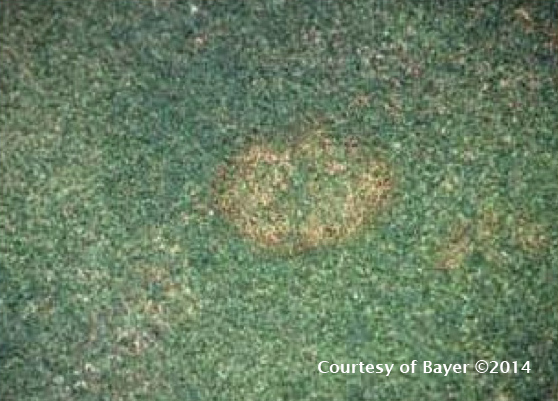Fusarium
Introduction
Winter Fusarium is caused by the fungus ‘Microdochium nivale’. It is primarily a winter disease of cool season turf, however it has been observed to also infect warm season turf species. It is often characterised by an orange / brown colour in the patch and patch borders of affected turf grass. ‘Fusarium Patch’ and ‘Pink Snow Mould’ are caused by the same fungus, however they can be considered two different diseases because of their environmental conditions needed (i.e. Fusarium Patch is the common name used when it the disease occurs in the absence of snow cover).

Symptoms are generally evident from Autumn to Spring under favourable conditions. Fusarium survives through the spring and summer as spores and mycelium in the thatch or soil when temperatures are above 16°C or when it is dry. Under cool, wet weather, spores may germinate or mycelium may grow from thatch or soil and infect leaves within the turf canopy
Biology
Symptoms are generally evident from Autumn to Spring under favourable conditions. Fusarium survives through the spring and summer as spores and mycelium in the thatch or soil when temperatures are above 16°C or when it is dry. Under cool, wet weather, spores may germinate or mycelium may grow from thatch or soil and infect leaves within the turf canopy
Conditions favouring disease expression
Temperature conditions that heighten the risk of Fusarium infection range from near freezing to around 16°C. Because Fusarium favours cooler conditions and is normally associated with low humidity, however infection risk increases with long periods of leaf and shoot wetness.
Visual symptoms
Symptoms develop slowly and can take several weeks from the time of infection to be clearly visibility. Circular patches first appear as water-soaked spots at less than 5cm in diameter, then rapidly change colour to tan, brown, dark brown and finally light grey. Patches can enlarge u to 20cm in diameter overtime. Fungal mycelium may be seen within the shoot system of affected area. The mycelium is white in colour, but in direct sunlight induces spore production, which is a pink colour.
Distribution
Fusarium occurs in temperate to sub temperate climates
Download PDF